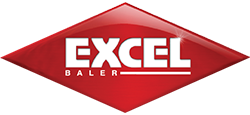PRODUCTS
Our horizontal baler recycling equipment is the industry standard
We take pride in doing it better. At the outset over 30 years ago, we were willing to innovate, improve processes and navigate the complexities. We did it by breaking down old ways of doing things, embracing emerging technology, and just flat out building with quality materials and construction techniques.
We also did it by listening and translating your needs into well-received recycling solutions, and we proudly continue that same mindset into today’s recycling environment.
Recycling balers responsive to your needs
When you work with Excel Baler, you are buying less downtime, fewer repairs and most of all longevity. Isn’t that what you want at the end of the day? Our machines have stood the test of time. We’re happy to point out the differences such as better welds, components and superior structural design.
There are plenty of imitators out there and many will cheapen their product. We’ve seen it, and so have our new customers. Bring on your recycling needs and Excel will design products to your exacting standards and requirements.
Our team uses some of the most advanced construction processes in the industry—with a service-first mentality.
After the thousands of machines, we’ve constructed over the years, you’d think we would have learned a few things—and we have. Every order teaches us something new. We’ve honed our craft, adopted better technology and improved our work methods.
We’re driven to exceed your recycling requirements from initial order through ongoing requests for service and parts long after installation.
Put our team of baler experts to work for you!
Start the process
Let us help you waste less and recycle more today!




